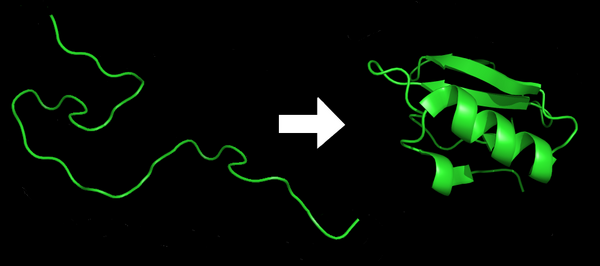Efficacy of Mass Spectrometry Versus 1H Nuclear Magnetic Resonance With Respect to Denaturant Dependent Hydrogen-Deuterium Exchange in Protein Studies
(1) Charter School of Wilmington, Wilmington, Delaware, (2) University of Pennsylvania Perelman School of Medicine, Philadelphia, Pennsylvania
https://doi.org/10.59720/19-001
Understanding how proteins fold holds the key to many crucial advancements in the medical field, such as the treatment of chronic diseases. Measuring the rate of hydrogen-to-deuterium exchange for labile hydrogens within proteins exposed to deuterium oxide (D2O) can help elucidate the folding pathway of a protein. Mass spectrometry can be used to determine the extent of deuterium exchange by calculating ΔGHX (mass-to-charge ratio) values. These values were then compared the mass spectrometry results to previous exchange measurements taken by 1H NMR to investigate if mass spectrometry can be a viable method for measuring hydrogen-deuterium exchange in proteins. Once all of the reactions at different time points (10 seconds to 172,800 seconds) were conducted in the mass spectrometer in a 1.5M guanidine hydrochloride and D2O solution, the plotted data resulted in sigmoidal curves which showed dissimilar exchange rates to the previously archived 1H NMR data. After completion of the experiment, we concluded that further studies are necessary to draw a sound conclusion, as the field of study in which we tested solely 1.5M guanidine hydrochloride was too narrow. If reactions at other concentrations of guanidine hydrochloride yield the same exchange rates, denaturant-dependent hydrogen-deuterium exchange techniques can be applied in novel protein studies.
This article has been tagged with: